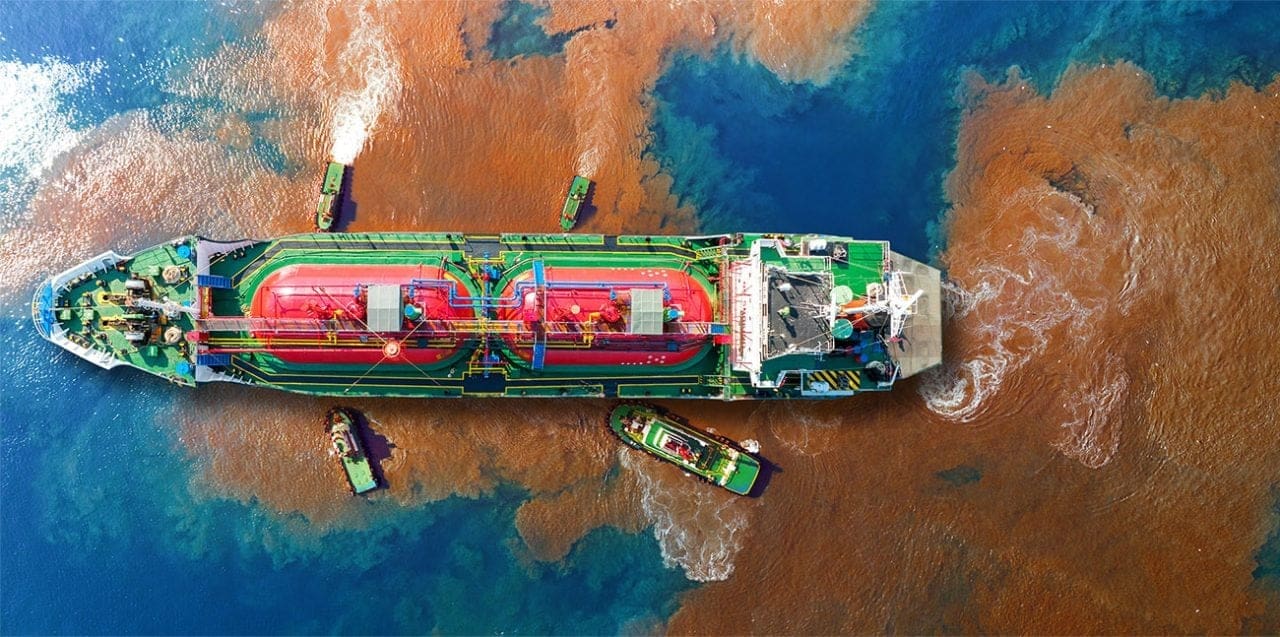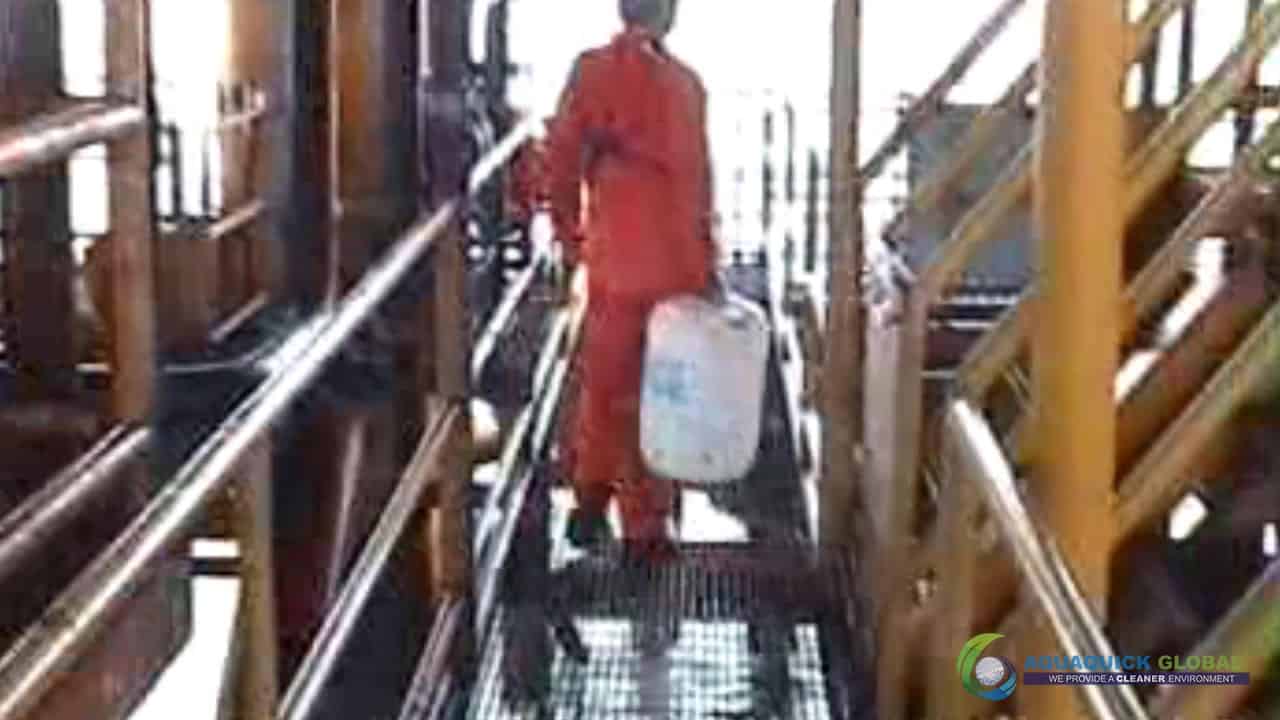Eco-Friendly Sea Spill Cleanup: The AQUAQUICK 2000 Advantage
Introduction: Pioneering Eco-Friendly Sea Spill Cleanup
In the face of escalating environmental concerns, the importance of eco-friendly sea spill cleanup methods has never been more evident. AQUAQUICK 2000 emerges as a groundbreaking solution, redefining the approach to sea spill cleanup with a strong emphasis on environmental responsibility. This article delves into the unique benefits of AQUAQUICK 2000, positioning it as an essential tool in the arsenal of eco-friendly solutions.
AQUAQUICK 2000 is a revolutionary product that sets a new standard for eco-friendly sea spill cleanup. Its advanced formula ensures effective and efficient removal of spills without causing harm to the marine ecosystem. With AQUAQUICK 2000, you can achieve rapid containment and dispersion of oil spills, minimizing the impact on marine life and coastal environments. This innovative solution not only delivers exceptional cleaning results but also promotes sustainable practices in the face of environmental challenges. By choosing AQUAQUICK 2000, you contribute to preserving the delicate balance of our oceans while effectively addressing sea spill incidents.
The Urgent Need for Eco-Friendly Sea Spill Cleanup
Addressing the Environmental Challenge
Sea spills pose a significant threat to marine ecosystems, making eco-friendly sea spill cleanup methods crucial. Traditional sea spill cleanup techniques, while effective in containment, often involve chemicals that can harm marine life. AQUAQUICK 2000 presents an alternative, championing eco-friendly sea spill cleanup that prioritizes the health of ocean ecosystems.
AQUAQUICK 2000: Revolutionizing Sea Spill Cleanup
A Sustainable Approach
The cornerstone of AQUAQUICK 2000’s effectiveness in sea spill cleanup is its eco-friendly formulation. Unlike conventional sea spill cleanup methods that rely on harsh chemicals, AQUAQUICK 2000 uses biodegradable components, ensuring the safety of marine life during the sea spill cleanup process.
The Science Behind AQUAQUICK 2000 in Sea Spill Cleanup
Innovative and Effective
AQUAQUICK 2000’s advanced technology is a game-changer in eco-friendly sea spill cleanup. It breaks down oil spills into smaller particles, simplifying the sea spill cleanup process and reducing environmental impact. This scientific approach not only enhances the efficiency of sea spill cleanup but also aligns with eco-friendly practices.

The Importance of Eco-Friendly Practices in Sea Spill Cleanup
Embracing Environmental Stewardship
The adoption of eco-friendly practices in sea spill cleanup is not just a regulatory compliance issue but a moral imperative. The traditional approaches to managing sea spills, often involving harsh chemicals, have been found to exacerbate environmental damage, affecting both marine life and the quality of seawater. In contrast, eco-friendly sea spill cleanup methods prioritize the preservation of marine ecosystems, ensuring that the immediate effectiveness of spill management does not come at the cost of long-term environmental health.
The Evolution of Sea Spill Cleanup Technologies
From Chemical Dispersants to Biodegradable Solutions
The journey from traditional chemical-based solutions to eco-friendly alternatives in sea spill cleanup reflects a broader shift in environmental awareness and technology. In the past, the focus was predominantly on immediate spill containment and removal, often overlooking the secondary effects of the cleanup process itself. Modern eco-friendly solutions, like AQUAQUICK 2000, represent a new era in sea spill cleanup where the technology is not only effective in addressing spills but also in safeguarding the ocean’s biodiversity.

The Impact of Eco-Friendly Sea Spill Cleanup on Marine Life
Protecting Oceanic Habitats
One of the most significant advantages of eco-friendly sea spill environmental cleanup is the reduced impact on marine life. Traditional methods can harm sensitive marine habitats, whereas eco-friendly alternatives are designed to minimize toxicity and physical disturbance to aquatic organisms. By utilizing methods that are less invasive and toxic, we can better protect the diverse species that rely on the ocean for survival, from the smallest plankton to the largest marine mammals.
Global Trends and Regulations in Sea Spill cleaning
Adapting to a Changing Environmental Landscape
Global trends and regulations increasingly favor eco-friendly sea spill cleanup methods. Governments and environmental bodies worldwide are recognizing the importance of sustainable practices in marine safety and conservation. This shift is not only a response to the escalating environmental crises but also a proactive measure to preserve marine ecosystems for future generations. AQUAQUICK 2000, being at the forefront of this change, aligns with these global initiatives, offering a solution that meets the stringent standards of eco-friendliness and efficacy.
The Role of Community and Industry in Promoting Eco-Friendly Sea Spill Cleanup
Collaborative Efforts for a Sustainable Future
The responsibility of eco-friendly sea spill cleanup extends beyond manufacturers and spills response teams; it involves the collective efforts of the community, industry stakeholders, and environmental advocates. By fostering a culture that values and demands eco-friendly practices, we can ensure a concerted approach towards sustainable sea spill management. AQUAQUICK 2000’s role in this collective effort is pivotal, as it not only offers an eco-friendly solution but also raises awareness about the importance of sustainable practices in marine conservation.
Comparative Advantage in Sea Spill Cleanup
Balancing Efficiency and Ecology
In the realm of sea spill cleanup, AQUAQUICK 2000 stands out for its dual focus on efficiency and environmental protection. Its ability to quickly address sea spills, coupled with its eco-friendly nature, makes it a superior choice for sea spill cleanup, especially for those dedicated to sustainable marine practices.
AQUAQUICK 2000’s Role in Promoting Marine Safety
Beyond Sea Spill Cleanup
AQUAQUICK 2000 extends its benefits beyond mere sea spill cleanup. It plays a vital role in protecting marine ecosystems and supporting the livelihoods of coastal communities. The use of AQUAQUICK 2000 in sea spill cleanup is a step towards ensuring long-term marine safety and preserving the oceans for future generations.
Embracing AQUAQUICK 2000 for Sustainable Oceans
The adoption of AQUAQUICK 2000 in sea spill cleanup processes signifies a commitment to the sustainability of our oceans. By choosing eco-friendly sea spill cleanup methods, we contribute to the preservation of marine ecosystems. AQUAQUICK 2000 stands as a symbol of innovation driven by environmental stewardship, leading the way in eco-friendly sea spill cleanup.
Embracing AQUAQUICK 2000 for Sustainable Oceans
The adoption of AQUAQUICK 2000 in sea spill cleanup processes signifies a commitment to the sustainability of our oceans. By choosing eco-friendly sea spill cleanup methods, we contribute to the preservation of marine ecosystems. AQUAQUICK 2000 stands as a symbol of innovation driven by environmental stewardship, leading the way in eco-friendly sea spill cleanup.
The use of AQUAQUICK 2000 during sea spills demonstrates dedication to ocean sustainability. Opting for environmentally friendly methods helps protect marine ecosystems. AQUAQUICK 2000 represents innovative and responsible approaches to eco-friendly sea spill solutions.
The utilization of AQUAQUICK 2000 in combatting sea spills reflects a commitment to sustaining our oceans. Opting for eco-friendly methods contributes to the preservation of marine ecosystems. AQUAQUICK 2000 serves as an emblem of innovative environmental stewardship, leading the way in eco-conscious sea spill cleanup. The incorporation of AQUAQUICK 2000 in sea spill cleanup showcases a dedication to promoting ocean sustainability. Choosing environmentally responsible approaches helps safeguard marine ecosystems. AQUAQUICK 2000 exemplifies innovative and accountable practices in eco-friendly sea spill cleanup.
The Historical Impact of Major Oil Firms on Sea Spills
The Legacy of Environmental Challenges
The history of sea spills is inseparably linked with the operations of major oil companies like Shell, BP, and others. Over the decades, these corporate giants have been associated with some of the most significant and environmentally catastrophic sea spills in history. The impact of these incidents has been profound, shaping policies, influencing public opinion, and driving the development of more effective sea spill technologies, including eco-friendly solutions like AQUAQUICK 2000.
Notable Incidents and Their Consequences
One of the most infamous sea spills was the Deepwater Horizon oil spill in 2010, involving BP. It is considered one of the worst environmental disasters in history, with millions of barrels of oil spilling into the Gulf of Mexico, causing extensive damage to marine and coastal ecosystems. Similarly, Shell has faced its own challenges, such as the 1979 Ixtoc I oil spill in the Gulf of Mexico, which was one of the largest oil spills ever recorded. These incidents highlighted the need for more robust safety measures and more effective response strategies for sea spills.
Lessons Learned and the Push for Eco-Friendly Solutions
The aftermath of these large-scale sea spills brought about a paradigm shift in how oil spills are managed. They underscored the urgency for research and development in eco-friendly sea spill cleanup methods, as traditional methods were often found wanting in terms of environmental safety and long-term effectiveness. This push for innovation has led to the development of products like AQUAQUICK 2000, which offer a safer, more sustainable approach to tackling sea spills.
Corporate Responsibility and Changing Industry Dynamics
In response to these environmental catastrophes, there has been a notable change in how major oil firms approach environmental responsibility. Stricter regulations, enhanced safety protocols, and a greater focus on sustainable practices have become more prevalent. These companies are increasingly recognizing the importance of minimizing their environmental impact and investing in eco-friendly technologies for sea spill cleanup.
Collaborative Efforts for Future Prevention
The legacy of sea spills has also fostered a sense of collaborative effort between oil companies, environmental agencies, and innovators in the field of spill cleanup technology. There is a growing understanding that preventing and effectively responding to sea spills is a collective responsibility that requires input from various stakeholders. This collaboration is crucial for the continuous improvement of sea spill management practices and the development of more effective and environmentally friendly cleanup solutions.
Traditional Sea Spill Cleanup Methods
Commonly Used Techniques
Over the years, several methods have been employed to address the challenge of sea spills, each with its own set of advantages and limitations. Some of the most prevalent traditional sea spill cleanup methods include:
- Booms and Skimmers: These are physical barriers and tools used to contain and skim oil off the water’s surface. While effective for localized spills, they struggle in rough sea conditions and cannot recover dissolved or dispersed oil.
- Chemical Dispersants: These are chemicals sprayed on spills to break down oil into smaller droplets, promoting natural biodegradation. However, the environmental impact of these chemicals themselves has been a subject of concern due to potential toxicity.
- Burning In-Situ: This method involves controlled burning of the oil slick on the water’s surface. While it can rapidly reduce the amount of oil, it produces air pollution and is only feasible under specific conditions.
- Manual Cleanup: This includes the use of sorbents and manual labor to clean affected shorelines. It’s labor-intensive and often not practical for large-scale spills.
- Bioremediation: This involves using microorganisms to break down oil. Although it’s eco-friendly, the process is slow and may not be effective in all types of spills.
Why AQUAQUICK 2000 Is the Dominant Solution
Advantages Over Traditional Methods
AQUAQUICK 2000 stands out as a superior solution in sea spill cleanup for several reasons:
- Eco-Friendly and Safe: AQUAQUICK 2000’s biodegradable formula ensures that the cleanup process does not harm marine life or further pollute the environment, unlike chemical dispersants that may introduce additional toxins.
- Effectiveness in Various Conditions: Unlike physical barriers like booms, which are less effective in rough seas, AQUAQUICK 2000 can be used effectively in a variety of marine environments and conditions.
- Efficiency in Oil Breakdown: AQUAQUICK 2000 emulsifies oil, breaking it down into smaller particles more effectively than manual methods or bioremediation, thus speeding up the cleanup process.
- Reduced Air Pollution: Unlike in-situ burning, AQUAQUICK 2000 does not generate harmful air pollutants, making it a safer choice for both the environment and human health.
- Versatility: AQUAQUICK 2000 is versatile and can be used for both large-scale and localized spill incidents, offering a more practical solution than manual cleanup methods.
- Long-Term Ecological Protection: By preserving marine ecosystems and preventing long-term damage, AQUAQUICK 2000 aligns with global efforts towards sustainable ocean management.














